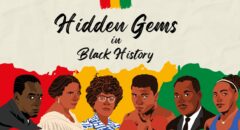
Though you may be used to hearing about medical breakthroughs being made by scientists and researchers, you may be surprised to learn that the idea for the first vaccine came from an enslaved African man. His name was Onesimus and his suggestion saved Massachusetts from a devastating smallpox outbreak.
Who was Onesimus?
There isn’t much information about the enslaved man apart from his contribution to the fight against smallpox in 1721. However, in her article for Forbes, Meet Onesimus, The Enslaved Man Who Saved Colonial Boston From Smallpox, Kiona N. Smith provides a little background based on Puritan minister Cotton Mather’s diary.
It’s unclear what the man’s birth name was as Maher gave him the name ‘Onesimus’ in reference to another enslaved man in the Bible whose name meant ‘useful’. Onesimus joined the Maher household as an enslaved man in 1706 and according to a notation in Maher’s diary, he may have come from Ghana. He was married but his wife might not have been in the same house.
As you might expect, history doesn’t record much more about Onesimus after his contribution to controlling the smallpox outbreak. There are a few notations, however, that suggest he left the Maher household and eventually became a free man.
What he Suggested
In the article for History magazine, How an Enslaved African Man in Boston Helped Save Generations from Smallpox, Erin Blakemore notes that Maher didn’t trust Onesimus at the beginning. As smallpox ravaged the colony, though, he was intrigued by what the enslaved man had to say about the disease. At a time when smallpox had killed at least 30% of the people who contracted it, Onesimus told Maher that he’d contracted the illness but barely felt ill and survived it.
He said that he’d undergone a procedure where the pus from an infected person’s lesion was applied to a wound on his arm. While the exposure made him sick, it was much milder than what happened to those who eventually caught smallpox. After confirming the enslaved man’s account, Maher became very vocal about the procedure.
How it Made a Difference
Despite Maher’s insistence that the medical community try the same procedure that Onesimus had undergone, there was a lot of pushback. It wasn’t until 1721 that a doctor who believed the procedure could be successful, Zabdiel Boylston, got a chance at a trial. During that time, a ship carrying people infected with smallpox spread the disease to the Boston population. Boylston acted quickly to inoculate his son and the enslaved people in his household.
Eventually, he moved on to inoculate another 242 people in Boston. Of those inoculated only six died, which translated to only one in 40. By comparison, about one in seven people who weren’t inoculated died from smallpox. The lack of inoculation led to the deaths of 844 people but opened the door for treating future epidemics differently. In 1796, Edward Jenner created a vaccine for smallpox based on cowpox.
This is a part of our new series – “Hidden Gems in Black History” where we highlight uncommon facts throughout Black history. Join us every day in Black History Month for interesting facts about Black people and places that you likely haven’t heard before!
References:
https://www.history.com/news/smallpox-vaccine-onesimus-slave-cotton-mather



